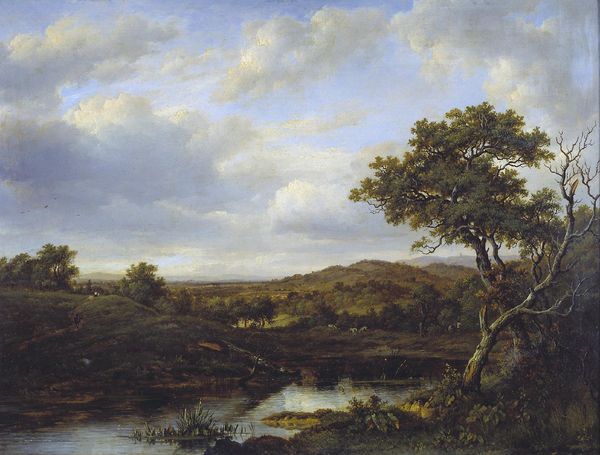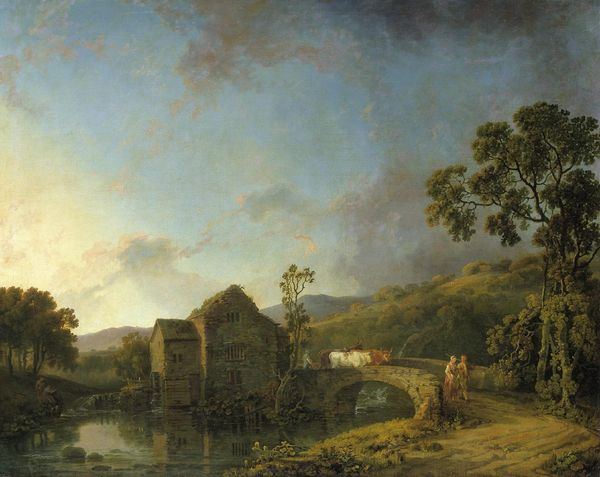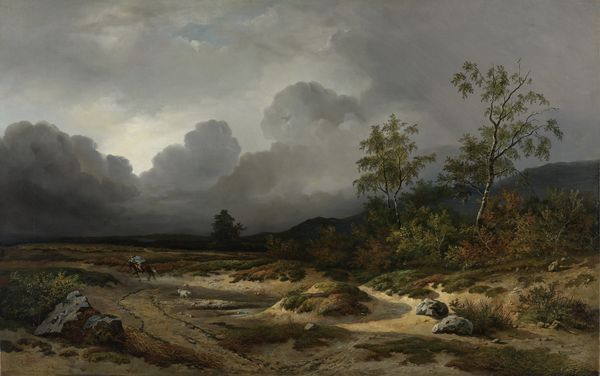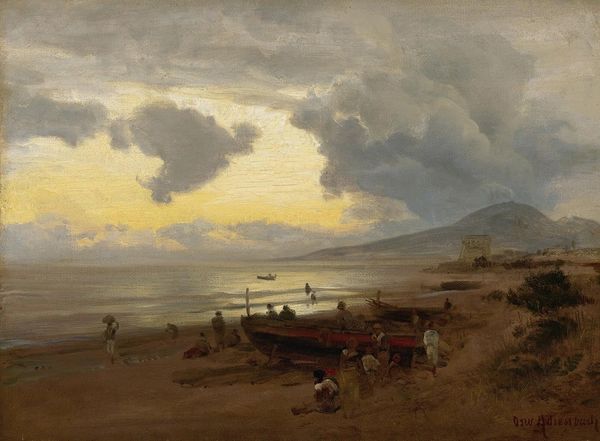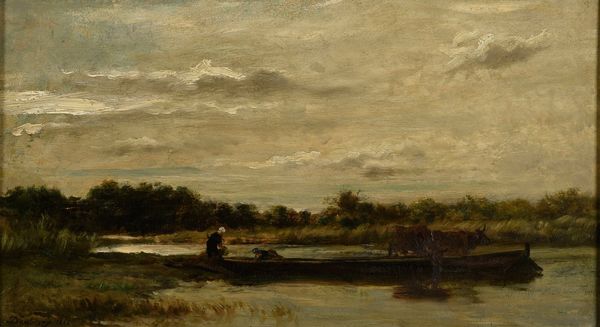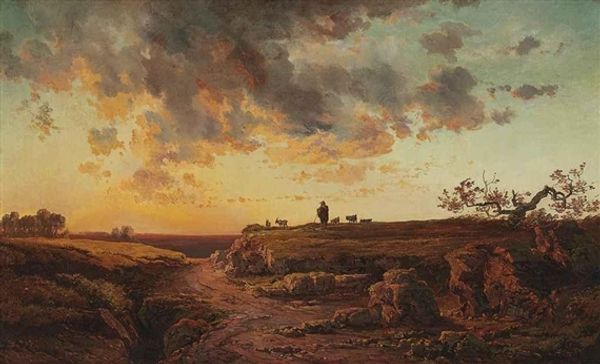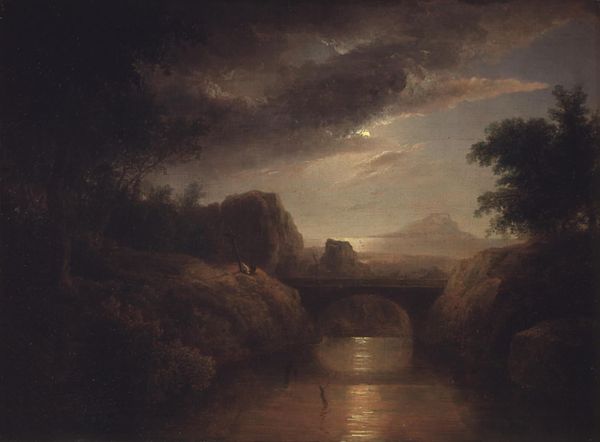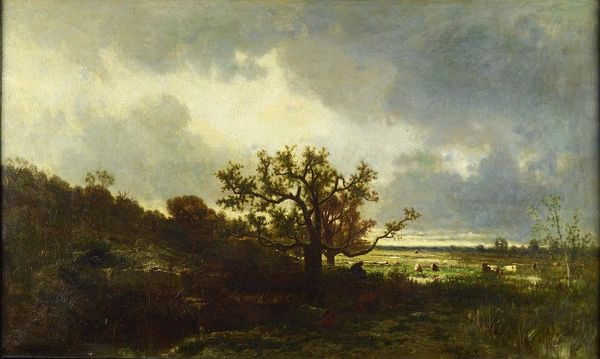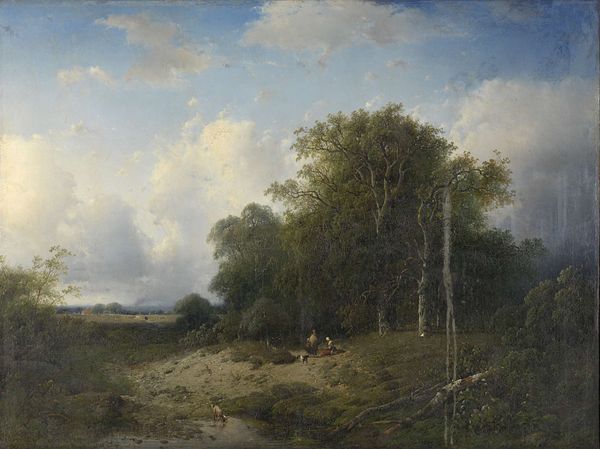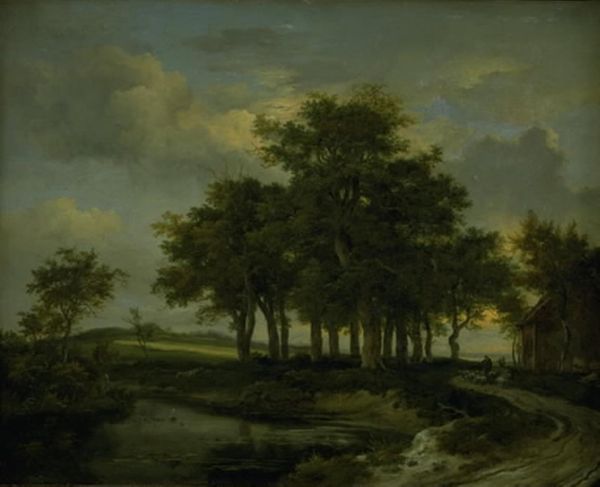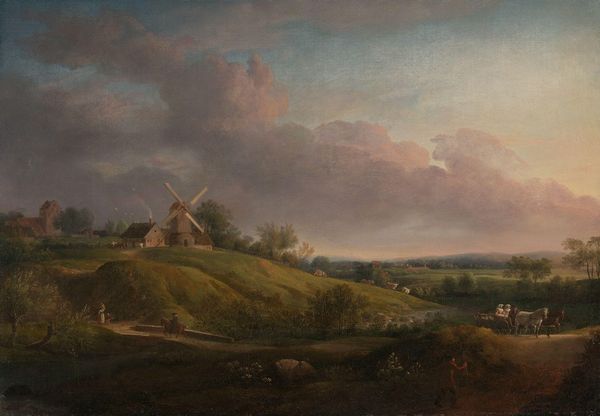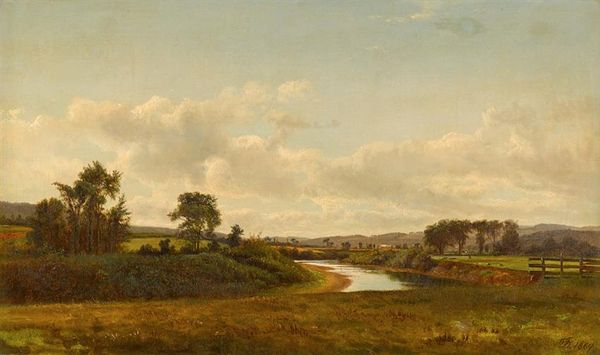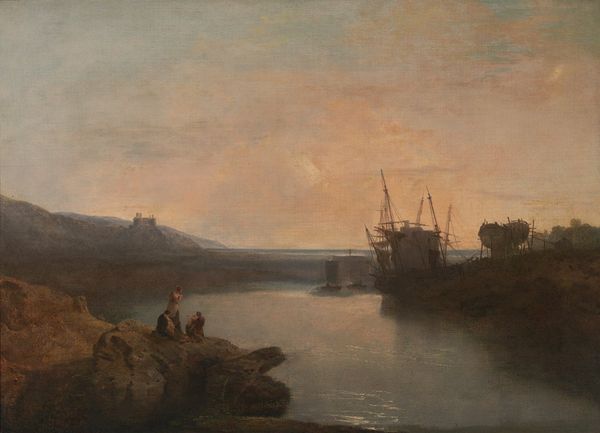
The Bridge across Tryggevælde River with a View of Køge, Zealand 1813 - 1816
0:00
0:00
oil-paint
#
oil-paint
#
landscape
#
romanticism
#
realism
Copyright: Public Domain: Artvee
Editor: We're looking at "The Bridge across Tryggevælde River with a View of Køge, Zealand," painted between 1813 and 1816 by Johan Christian Dahl. It’s an oil painting that immediately strikes me with its contrast between the stormy sky and the hopeful sunlight breaking through. What formal elements stand out to you? Curator: The artist employs a striking diagonal composition, anchored by the bridge, which leads the eye from the shadowed foreground to the distant, luminous horizon. Notice the artist's careful layering of tones, moving from cool grays and greens to warmer earth tones and finally to the soft yellows of the sky. How do you think that use of colour influences your perception? Editor: It's a bit unsettling; there is the implied danger of the storm versus the relief from what appears to be an oncoming burst of sunlight. Dahl masterfully contrasts the heavy, dark clouds with the almost ethereal glow on the horizon, but it's more than that; it's the relationship of masses. Can we look at his brushwork? Curator: Precisely. Observe the meticulous brushstrokes used to render the details of the bridge and the surrounding landscape, juxtaposed with the broader, more expressive strokes in the sky. This deliberate contrast in texture creates a dynamic visual experience. Editor: Seeing it this way, I agree about Dahl creating the scene for more than just picturesque purposes; his brushstrokes help translate the emotion. I now also see it more as realism than I did. Curator: Indeed. The artwork masterfully embodies that duality, capturing both the tangible reality and the intangible emotional response to nature. Considering Dahl’s emphasis on tonal contrast and dynamic composition, what can we understand about Romanticism as a moment, compared to, for example, realism? Editor: I now see how Dahl carefully balances realism with artistic expression, which speaks to Romanticism. Thanks!
Comments
No comments
Be the first to comment and join the conversation on the ultimate creative platform.
